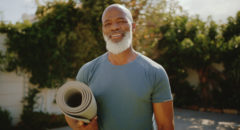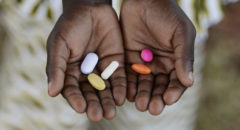
Exercise used to be off-limits to people with hemophilia. As late as the early 1960s, doctors worried that something as gentle as walking or a jog through the park could trigger internal bleeding. Today, people with hemophilia are hitting the gyms and playing just about everything except rough contact sports. They’re having fun, staying fit, and enjoying all of the other standard benefits of exercise. And far from putting their bodies at risk, they’re actually taking control of their disease. How much do you know about exercise and hemophilia? Take this short quiz to find out.
1. Exercise can prevent internal bleeds and protect joints.
True
False
2. If you already have chronic synovitis or another form of joint damage, it’s generally too late for exercise to do much good.
True
False
3. Weight lifting is too dangerous for most people with hemophilia.
True
False
4. Which of the following can help lower the risk of bleeds during exercise?
a. Thorough conditioning
b. Warming up and stretching
c. Prophylactic factor treatment
d. All of the above
5. According to the National Hemophilia Foundation, which of these sports is generally NOT safe for people with hemophilia?
a. Baseball
b. Wrestling
c. Gymnastics
d. Bicycling
e. All of the above
Your Results







